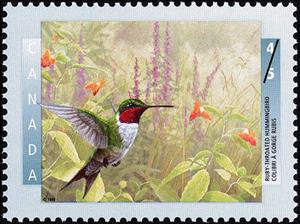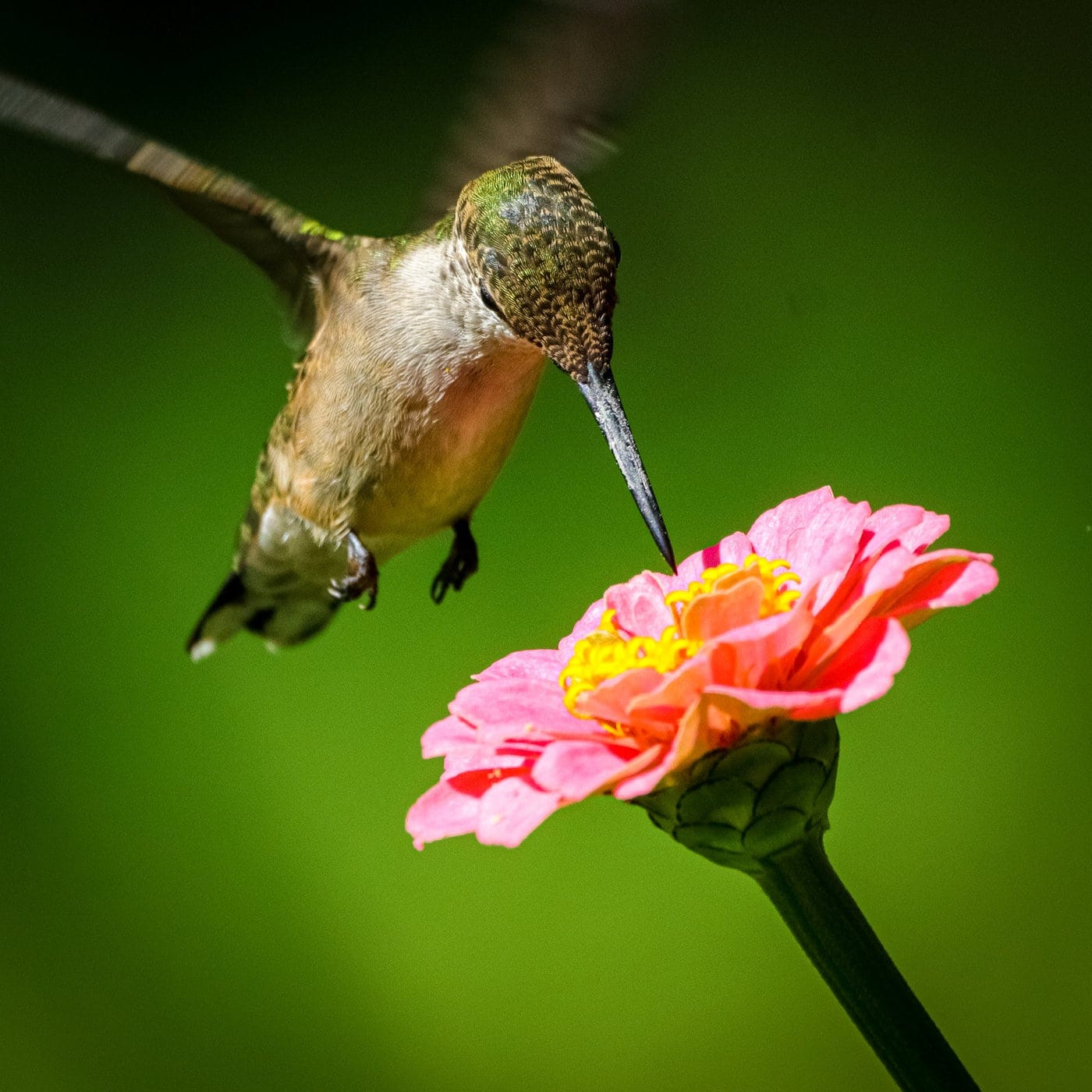Stamp: Ruby-throated Hummingbird (Archilochus colubris) (Canada 1996)
Ruby-throated Hummingbird (Archilochus colubris) (Canada 1996)
09 January (Canada ) within release Birds of Canada (1st series) goes into circulation Stamp Ruby-throated Hummingbird (Archilochus colubris) face value 45 Canadian cent
| Stamp Ruby-throated Hummingbird (Archilochus colubris) in catalogues | |
|---|---|
| Stamp Number: | Sn: CA 1594i |
Stamp is horizontal format.
stamp from se-tenant strip of four from philatelic pane. Under UV light stamp emits a strong bluish-white glow, fluorescent frame glows yellow-whiteAlso in the issue Birds of Canada (1st series):
- Mini Sheet - Birds of Canada face value 5.40;
- Mini Sheet - Birds of Canada face value 12*45;
- Stamp - Atlantic Puffin (Fratercula arctica) face value 45;
- Se-tenant - Birds of Canada (1st Series) Strip of 4 face value 4*45;
- Stamp - Ruby-throated Hummingbird (Archilochus colubris) face value 45;
Stamp Ruby-throated Hummingbird (Archilochus colubris) it reflects the thematic directions:
Animals are multicellular, eukaryotic organisms of the kingdom Animalia (also called Metazoa). All animals are motile, meaning they can move spontaneously and independently, at some point in their lives. Their body plan eventually becomes fixed as they develop, although some undergo a process of metamorphosis later on in their lives. All animals are heterotrophs: they must ingest other organisms or their products for sustenance.
Birds (Aves), a subgroup of Reptiles, are the last living examples of Dinosaurs. They are a group of endothermic vertebrates, characterised by feathers, toothless beaked jaws, the laying of hard-shelled eggs, a high metabolic rate, a four-chambered heart, and a strong yet lightweight skeleton. Birds live worldwide and range in size from the 5 cm (2 in) bee hummingbird to the 2.75 m (9 ft) ostrich. They rank as the class of tetrapods with the most living species, at approximately ten thousand, with more than half of these being passerines, sometimes known as perching birds. Birds are the closest living relatives of crocodilians.
Hummingbirds are birds native to the Americas and comprise the biological family Trochilidae. With approximately 366 species and 113 genera, they occur from Alaska to Tierra del Fuego, but most species are found in Central and South America. As of 2024, 21 hummingbird species are listed as endangered or critically endangered, with numerous species declining in population



